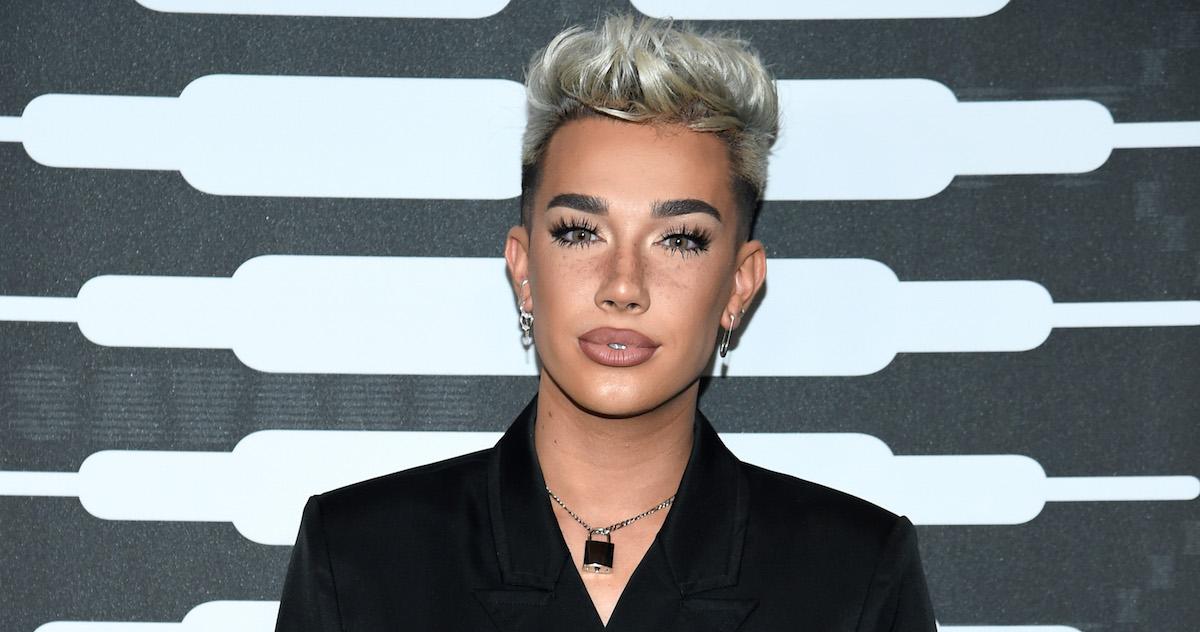Welcome to the wild world of YouTube, where creativity meets controversy! It's a platform that has birthed countless stars, but not all of them shine without a little shade. In this blog post, we’ll dive into what makes a YouTuber controversial and explore some of the most talked-about figures in this digital arena. From their outrageous antics to polarizing opinions, we'll uncover how these creators have shaped the platform and influenced their audiences.
The Definition of a Controversial YouTuber

So, what exactly qualifies someone as a controversial YouTuber? It’s not just about having a few haters; it’s about consistently pushing boundaries and sparking debates. Here are some key characteristics:
- Provocative Content: These YouTubers often create videos that challenge social norms or tackle sensitive topics, igniting discussions (and often outrage).
- Polarizing Opinions: They tend to voice strong opinions that resonate with some viewers while alienating others. Think of creators who dive into politics, social issues, or even personal lifestyles.
- Scandals and Drama: Many controversial YouTubers find themselves at the center of scandals, whether it’s feuds with other creators or questionable personal behavior.
- Engagement Strategy: Controversy can be a strategy to boost engagement. These creators often thrive on the debates that follow their content, generating more views and comments.
To illustrate, let’s look at a few examples:
| YouTuber | Type of Controversy | Impact |
|---|---|---|
| Jake Paul | Pranks and illegal activities | Massive follower base, but significant backlash from authorities and communities. |
| Tana Mongeau | Scandals and feuds | Gained fame through drama, but faced criticism for authenticity and ethics. |
| Logan Paul | Suicide forest video | Faced widespread condemnation but also a surge in followers after his apology and rebranding. |
These examples showcase how controversy can serve as both a double-edged sword and a launchpad for growth. In a world where attention is currency, being controversial can lead to both loyal fans and harsh critics. As we continue to explore this topic, remember that the impact of a controversial YouTuber goes beyond views—it can influence culture, brand partnerships, and even societal norms.
Also Read This: How to Download Private Videos from YouTube for Personal Use
Top Controversial YouTubers

When it comes to YouTube, the platform is a treasure trove of creativity, knowledge, and entertainment. But, let’s be honest, some of the most talked-about creators are those who stir the pot with their controversial content. Here are a few YouTubers who have made headlines for their polarizing actions and opinions:
- Logan Paul - Known for his outrageous vlogs, Logan faced immense backlash in 2017 after filming a dead body in Japan's Aokigahara Forest. This incident not only led to a significant decline in his popularity but also sparked discussions about the morality of content creation.
- Jake Paul - Often seen as Logan’s counterpart, Jake has been embroiled in numerous controversies, including dangerous pranks and allegations of abuse. His antics have led to multiple investigations and a mixed reception from fans and the public.
- James Charles - This beauty influencer has found himself at the center of several scandals, including a public feud with fellow YouTuber Tati Westbrook that resulted in a massive subscriber drop. His story illuminates the fragile nature of internet fame.
- Shane Dawson - Once beloved for his documentary-style videos, Shane faced criticism for past offensive content and allegations of inappropriate behavior, leading to a significant backlash from fans and various brands.
- Jeffree Star - Known for his makeup empire, Jeffree has been involved in countless controversies, including accusations of racism and bullying. His polarizing persona keeps audiences divided.
These creators not only ignite intense discussions among their followers but also raise questions about accountability and the responsibilities that come with influence. The fine line between entertainment and ethical content is a recurring theme in their narratives.
Also Read This: Can I Use YouTube Videos on My Website? Legal Considerations
Impact on the YouTube Community
The controversies surrounding these YouTubers have left a profound mark on the YouTube community. Here’s a closer look at how their actions have shaped the platform:
- Content Creation Standards - With rising controversies, YouTube has started to enforce stricter guidelines for content creators. This includes more rigorous policies on hate speech, bullying, and graphic content, significantly altering how creators approach their videos.
- Viewer Trust - Trust in YouTube influencers has been shaken. Many viewers are now more discerning about the content they consume, questioning the authenticity and intentions behind creators’ actions. This shift has encouraged some creators to adopt a more responsible approach.
- Community Backlash - The fallout from controversial figures often leads to wider community reactions, spawning movements like “cancel culture.” This phenomenon can result in both significant losses and gains for creators, as the audience seeks accountability.
- New Platforms and Creators - As controversies unfold, many viewers have turned to alternative platforms like TikTok or Twitch for fresh content. This shift has opened doors for new creators who prioritize transparency and positive engagement.
Ultimately, the controversies surrounding these YouTubers highlight an ongoing struggle within the platform: balancing creativity with ethical responsibility. As the community evolves, it will be interesting to see how these dynamics continue to unfold.
Also Read This: How to Revert YouTube Layout Back to Default: A Step-by-Step Guide
5. Public Perception and Backlash
When it comes to controversial YouTubers, public perception can swing like a pendulum. One moment, they might be riding high on waves of popularity, and the next, they’re facing significant backlash. This dynamic is often fueled by the immediacy of social media, where opinions can be shared—and amplified—within seconds.
Take, for example, Logan Paul. His infamous trip to Japan's Aokigahara forest in 2017, where he filmed a deceased individual, sent shockwaves across the internet. Initially, his followers rallied behind him, but the public outcry was immense. Major brands cut ties, and he faced a temporary ban from YouTube’s ad revenue program. This incident showcases how quickly public perception can shift; one moment, he was a beloved vlogger, and the next, he was widely criticized.
Similarly, James Charles experienced a rapid change in public sentiment during his feud with fellow YouTuber Tati Westbrook in 2019. The fallout led to a massive subscriber loss for Charles, with many fans turning against him. However, he managed to rebuild his reputation over time, illustrating how public perception can be fluid and subject to change. Fans can be fickle, and the rise and fall of these creators often reflects a wider cultural conversation around accountability and cancel culture.
- Factors Influencing Public Perception:
- Social Media Reactions: Twitter and Instagram can amplify both support and criticism.
- Influencer Collaborations: Friends and enemies in the influencer space can sway audience opinions.
- Media Coverage: Articles and news segments can shape narratives around a creator.
Backlash can lead to significant changes in a YouTuber's content or approach. Many creators try to address their controversies through apologies or by shifting their focus to positive content. For example, after the backlash, Logan Paul transitioned to boxing and philanthropy, showing that while public perception can be damaging, it can also lead to growth and transformation.
Also Read This: Is YouTube Automation Legitimate
6. Case Studies of Notable Controversies
Examining specific case studies can provide a clearer picture of the controversies surrounding YouTubers and their impacts. Let’s dive into a couple of notable examples.
Case Study 1: PewDiePie and the "N-Word" Incident
In 2017, PewDiePie, one of the most subscribed YouTubers, faced backlash after using a racial slur during a live stream. The incident sparked discussions about racism in gaming and the responsibility of influencers. PewDiePie subsequently apologized, stating that he never intended to cause offense, yet the controversy shed light on the importance of language and accountability in online spaces.
Case Study 2: Shane Dawson's Past Controversies
Shane Dawson has faced multiple controversies over the years, particularly for past offensive content and comments. His 2020 documentary series on beauty guru Jeffree Star was met with scrutiny, as people revisited Dawson's older videos that perpetuated stereotypes and used racial slurs. The backlash prompted a broader conversation about the evolution of content creation and the importance of recognizing past mistakes. Dawson eventually took a break from YouTube, reflecting a growing awareness of accountability in the platform's community.
| YouTuber | Controversy | Outcome |
|---|---|---|
| PewDiePie | Use of racial slur | Apology and continued success in gaming community |
| Shane Dawson | Past offensive content | Temporary hiatus from YouTube and ongoing discussions about accountability |
These case studies illustrate not only the controversies themselves but also the broader cultural implications. Whether creators recover from backlash or face long-term consequences, their actions continue to shape public discourse on YouTube and beyond.
Also Read This: How to Cancel NFL Sunday Ticket on YouTube: Manage Your Subscriptions
7. What Makes a YouTuber 'The Worst'? Criteria and Opinions
When diving into the world of YouTube, the term "the worst YouTuber" gets tossed around quite a bit. But what does it actually mean? It's not just about bad content; it’s a blend of factors that leaves viewers shaking their heads. Let’s break down some of the common criteria that people use to label a YouTuber as "the worst."
- Content Quality: This is probably the most obvious factor. If the videos are poorly made—think bad lighting, shaky camera work, or amateur editing—it can turn viewers off quickly. Imagine clicking on a video expecting a thrilling adventure only to find someone rambling incoherently with terrible audio.
- Ethics and Behavior: YouTubers are often scrutinized for their off-screen behavior. Controversial stunts, offensive jokes, or inappropriate interactions with fans can lead to major backlash. For instance, the infamous pranks that cross the line into harassment often land certain content creators in hot water.
- Clickbaiting: There’s an art to enticing viewers without misleading them. When a YouTuber constantly uses clickbait titles and thumbnails that don't deliver on their promises, it can create a sense of betrayal among their audience. Imagine clicking on a "life-changing" video only to find it’s just a thirty-second ad!
- Consistency: Audiences appreciate when a creator maintains a certain level of quality and regularity. If a YouTuber bounces from one style to another, or stops posting altogether, it can lead to frustration. Fans want to know what to expect!
- Community Engagement: How a YouTuber interacts with their audience can make or break their reputation. Ignoring comments, being dismissive, or engaging in ego-driven behavior can lead to a disconnect with viewers.
Of course, opinions vary wildly on what makes a YouTuber the "worst." Some viewers might be drawn to the train-wreck aspect of a poorly received channel, finding entertainment in the chaos. Others, however, will quickly unsubscribe and voice their discontent on social media. It’s a fascinating intersection of personal preference and collective opinion!
8. Conclusion
As we wrap up our exploration of the most controversial YouTubers, it’s clear that the impact of these creators goes far beyond their subscriber counts. From shaping trends to sparking debates, their influence is palpable in today’s digital landscape. But what’s essential to remember is that controversy is often a double-edged sword.
While some YouTubers thrive on the drama and negativity, cultivating a brand around their "worst" reputation, others may find themselves in a cycle of cancel culture and backlash. It's a delicate balance of content creation where what makes one person popular could lead to another’s downfall.
In the end, it’s the audience that plays a crucial role in this ecosystem. Viewers have the power to uplift or tear down channels based on their values and expectations. So, whether you’re a fan of the “worst” or the “best,” always remember to engage critically with content. After all, we shape the platforms we consume!
What are your thoughts? Which YouTubers do you think are the most controversial, and why? Share your opinions in the comments below!
 admin
admin








